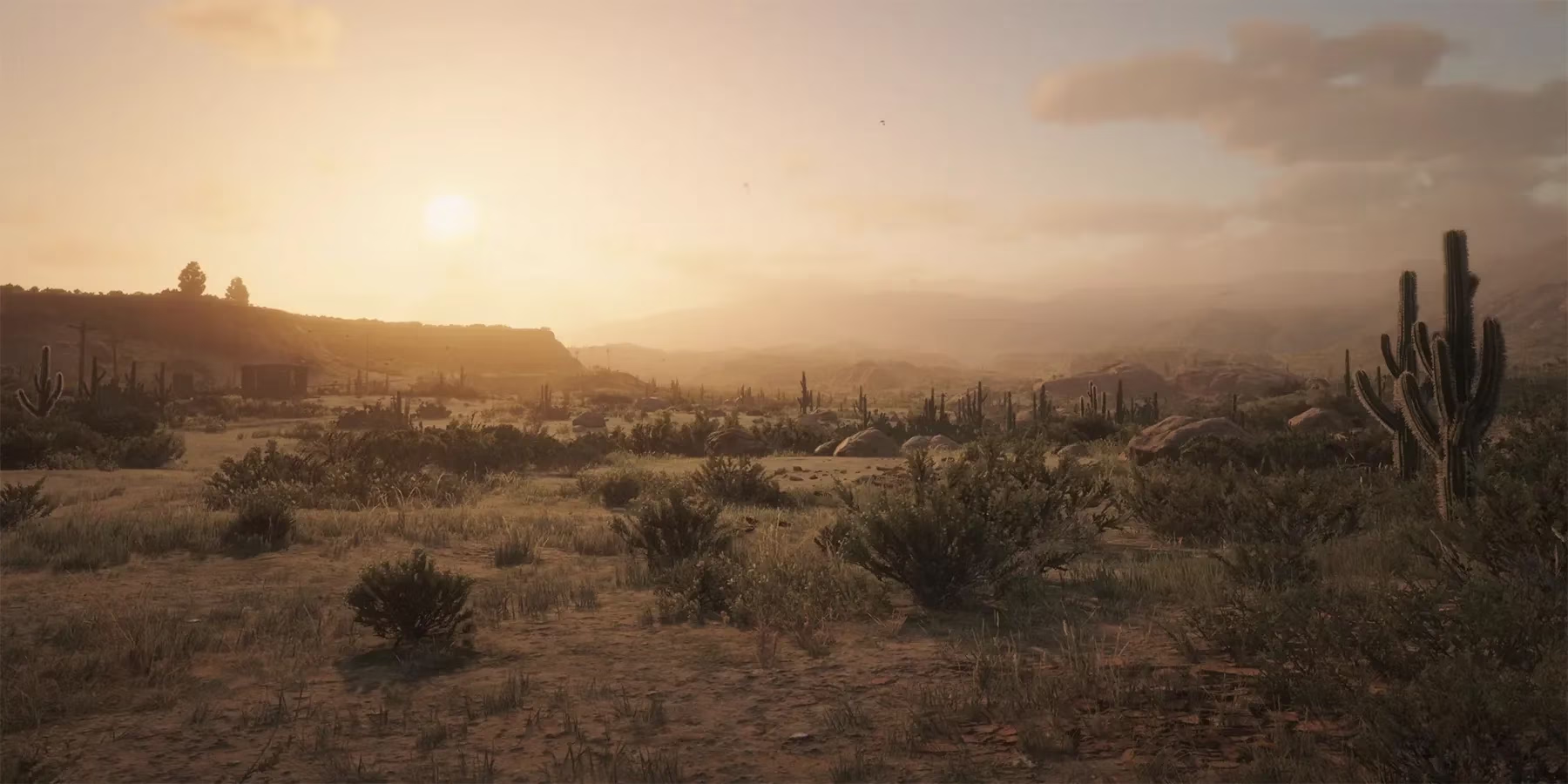New Austin Through Time: Comparing Visual Evolution in Red Dead Redemption Series
Explore the stunning evolution of New Austin in Red Dead Redemption series, highlighting artistic choices that evoke nostalgia and visual mastery.
The breathtaking landscapes of the Wild West have captivated players across generations of gaming, and nowhere is this more evident than in Rockstar's masterful Red Dead Redemption series. Recently, a dedicated player embarked on a fascinating visual journey, comparing how the iconic region of New Austin has evolved between the original 2010 release and its 2018 prequel. Despite the eight-year technological gap between the games, the results reveal surprising insights about artistic direction that go beyond mere graphical improvements.

Structural Consistency, Visual Transformation
What's immediately striking about this comparison is the remarkable structural consistency Rockstar maintained between the two iterations. Despite Red Dead Redemption 2 being set chronologically earlier as a prequel, the developers didn't opt for a visibly less-developed New Austin. Instead, they preserved the fundamental geography and landmarks that players had grown to love, creating a powerful sense of nostalgia for those who experienced both games.
The primary difference lies not in the architecture or landscape design, but rather in the games' distinct visual presentations. Red Dead Redemption 2, widely considered one of gaming's visual masterpieces even in 2025, bathes New Austin in vibrant, rich colors that bring the desert landscape to life. The lighting system creates dynamic shadows and golden hour effects that make every screenshot worthy of framing. One can almost feel the warmth of the sun and taste the dust in the air when riding through this version of the frontier.
Artistic Intent Behind Visual Choices
What makes this comparison particularly fascinating is how the original game's more muted, washed-out palette serves a deliberate narrative purpose. The first Red Dead Redemption tells the story of a dying Wild West, where civilization is encroaching on frontier freedom. The desaturated colors evoke a melancholic atmosphere that perfectly complements John Marston's journey through a world that's fading away. There's something hauntingly beautiful about how the original game uses visual restraint to enhance its storytelling.
As one player in the Reddit thread noted, "The first game feels like you're truly alone in a harsh, unforgiving land. The sequel is gorgeous, but the original's bleakness just hits different." This sentiment captures how technical limitations sometimes inadvertently create distinctive artistic statements that resonate with players on an emotional level.
Community Divided: Nostalgia vs. Fidelity
The gaming community remains charmingly divided on which visual approach they prefer. Many players who experienced the original Red Dead Redemption during its initial release harbor a deep attachment to its distinctive visual style. The washed-out colors have become inextricably linked with their memories of Marston's tragic story, creating a powerful nostalgic connection that transcends technical limitations.
Meanwhile, newer players who first experienced the frontier through Red Dead Redemption 2's stunning visuals might find it difficult to appreciate the more restrained approach of the original. The sequel's technical achievements—from realistic weather effects to incredibly detailed textures—have set a new standard for open-world immersion that continues to impress even in 2025.
Beyond Graphics: The Soul of New Austin
What makes New Austin such a compelling setting goes far beyond graphical fidelity. The region represents the mythic American frontier—a place of opportunity, danger, and untamed wilderness. Both games capture this essence through meticulous attention to environmental storytelling, from abandoned homesteads to the distinctive characters who populate its towns.
The time-lapse project mentioned in the comparison, where a player documented 120 hours of New Austin's dynamic weather and lighting systems in Red Dead Redemption 2, demonstrates the extraordinary depth Rockstar achieved in bringing this fictional landscape to life. Even after years of exploration, players continue to discover new details and hidden stories within its borders.
Looking Forward: New Austin's Future
As we move through 2025, the Red Dead community continues to speculate about the future of the series. With Grand Theft Auto 6 still occupying Rockstar's immediate focus, any potential Red Dead Redemption 3 remains years away at best. This hasn't stopped fans from wondering whether New Austin might feature in a future installment, perhaps showing yet another era in the region's fictional history.
The recent update to the Red Dead Redemption re-release, while focused primarily on stability improvements rather than content additions, shows that Rockstar hasn't completely forgotten about the franchise. For now, players can only revisit these two distinct visions of New Austin and appreciate how each serves its narrative purpose in different but equally effective ways.
The Power of Artistic Direction
This comparison ultimately reveals something profound about game development: technical capabilities serve artistic vision, not the other way around. The original Red Dead Redemption's more limited color palette created a specific mood that perfectly suited its story of a dying frontier. Meanwhile, Red Dead Redemption 2's vibrant presentation captures the vitality of the Wild West in its relative prime.
Looking at these two interpretations of the same fictional place reminds us that the most memorable gaming experiences aren't just about pushing technical boundaries—they're about creating worlds that feel alive and meaningful. Whether bathed in golden sunlight or shrouded in dusty haze, New Austin remains one of gaming's most evocative landscapes, a testament to Rockstar's commitment to creating places that feel like they exist beyond the screen.
As we return to that opening image comparing the two versions side by side, we're reminded that in gaming, as in all art forms, beauty isn't just about fidelity—it's about creating an emotional connection with the audience. Both versions of New Austin accomplish this in their own distinctive ways, ensuring that this fictional frontier will continue to captivate players' imaginations for years to come.